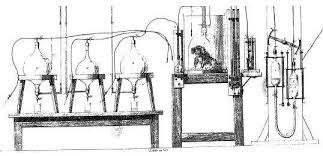Today's KNOWLEDGE Share:
Petrochemical Historical Timeline-1
1835 Polyvinyl chloride (PVC) discovered by French chemist and physicist Henri Victor Regnault after leaving a sample of vinyl chloride gas in the sun. The sample hardened into a white solid but it was not patented until 77 years later.
1839 Polystyrene was discovered by accident by German pharmacist Eduard Simon when he tried to distil a natural resin called storax. He obtained
an oily substance he called “styrol” and this thickened, probably due to oxidation. This substance wasn’t recognised as being made up
of many styrene molecules until 1920.
1851 Carbon oil for lamps first produced.1856 Synthetic dyes first discovered by 18-year old student William Perkin at the Royal College of Chemistry in London when trying to develop an artificial form of quinine from coal tar. Instead of quinine, he was left with a purple powder which was used as an affordable fabric dye. Before this, fabric was dyed purple using shells of a
Mediterranean mollusc and was very expensive. This discovery, making purple fabrics more widely available, boosted the petrochemical industry by demonstrating the usefulness and profitability of petrochemical products.
1859 Oil discovered when retired railway conductor Colonel Edwin L. Drake drills a well near Titusville, Pennsylvania. Annual US oil production is 2,000 barrels.
In 1862 Industrialist John D. Rockefeller financed his first oil refinery and created the Standard Oil Company with his brother, William and several
associates.
1865 First successful oil pipeline built from Titusville to a railway station five miles away.Trains then transported oil to refineries on the
Atlantic coast.
(to be continued)
Source:WPC Guide
Visit MY BLOG http://polymerguru.blogspot.com
#polymers #polymerscience #pvc #polystyrene #oilandgas #pipeline #dyes #purple #inventions #discoveries #petrochemical #gas #refinery #oil #chemistry





No comments:
Post a Comment